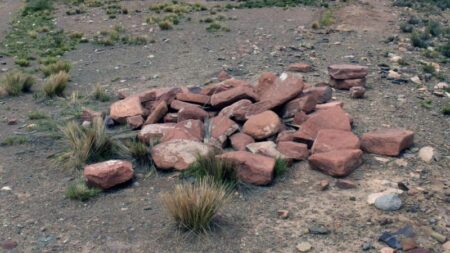Recent research has unveiled a significant geological feature beneath New Hampshire that could explain why the Appalachian Mountains continue to stand tall in the face of erosion. This extraordinarily hot mass of rock, referred to as the Northern Appalachian Anomaly (NAA), is located approximately 124 miles (200 kilometers) beneath the Earth’s surface and stretches between 217 and 249 miles (350 and 400 kilometers) in width. Found within the asthenosphere— the semi-molten layer of the Earth’s upper mantle— this thermal anomaly is characterized by considerably higher temperatures compared to its surrounding materials.
Historically, geologists believed that the NAA was formed when the North American continent separated from northwest Africa about 180 million years ago. However, new findings published on July 29 in the journal Geology propose an alternative origin, linking this anomaly to an event 80 million years ago when Greenland detached from North America. It has been found to be migrating at a rate of roughly 12.4 miles (20 kilometers) per million years, having shifted approximately 1,118.5 miles (1,800 kilometers) from its original position during the rifting near the Labrador Sea, situated between Canada and Greenland.
Lead researcher Tom Gernon, a professor of Earth science at the University of Southampton in the United Kingdom, expressed that the NAA has long intrigued geologists, particularly due to its location beneath a tectonically quiet region that has remained stable for the past 180 million years. He noted that the prevailing theory of it merely being a leftover from ancient geological activity lacked credibility. The anomaly could also shed light on the surprising resilience of the ancient Appalachian Mountains, which have experienced less erosion than might have been anticipated over millions of years.
Gernon explained that geothermal activity at the base of a continent can weaken its dense roots, thereby making the continental mass lighter and potentially leading to uplift, similar to how a hot air balloon ascends after shedding weight. Over the past few million years, this process may have contributed to the ongoing elevation of the Appalachian range, which was initially formed when the North American Plate collided with other tectonic plates during the Paleozoic Era.
The study provides a groundbreaking perspective on how such geological structures can shape the Earth’s surface and has implications beyond the Appalachian region. Researchers believe it could aid in understanding similar geological anomalies worldwide, such as another suspected anomaly located beneath north-central Greenland. The study’s insights into the NAA’s origins and effects on the landscape contribute to a deeper comprehension of geological phenomena and their long-term consequences.
Utilizing “mantle wave” theory, the research team drew a parallel between the NAA’s behavior and the mechanics observed in a lava lamp. As continents rift apart, hot, dense rock can break away from tectonic plates, creating waves beneath the Earth’s crust. This dynamic process results in upwelling material from the asthenosphere cooling and sinking, potentially leading to the cooler regions becoming denser as they interact with the continental edge.
Gernon pointed out that as the thermal anomaly migrates, it may influence seismic activity beneath the Appalachians, potentially triggering geological reactions likened to falling dominoes— where one disruption leads to several subsequent events. Over extended periods, these rock currents could contribute to volcanic eruptions and the uplift of mountain ranges.
To investigate the NAA, the research employed seismic wave imaging, geodynamic simulations, and plate tectonic reconstructions, enabling scientists to trace the region’s geological history back to its origins. The findings indicate that as the rock blob shifts and settles, it may reshape the surrounding crust, which could lead to further geological stabilization. Gernon posited that the absence of ongoing uplift would result in continued erosion of the mountains.
Furthermore, the study suggests that the breakup of Greenland and North America potentially initiated another thermal anomaly on the opposite side of the Labrador Sea, influencing ice sheet dynamics. Such discoveries highlight the persistent impacts of ancient geological processes on current and future Earth systems.
In summary, the research surrounding the Northern Appalachian Anomaly significantly alters our comprehension of geological structures beneath the Earth’s surface and their influence on prominent mountain ranges such as the Appalachians. The reported shifts and underlying processes also enhance the scientific dialogue regarding the interactions between Earth’s geological past and present conditions. The findings provide a compelling foundation for future studies aimed at further unraveling the complexities of Earth’s geological dynamics and their broader implications.












